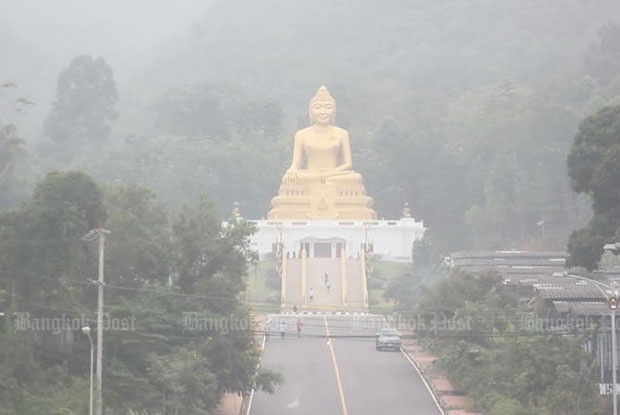
CHIANG MAI – Thailand is taking the lead in drafting a plan to set Asean on the road to becoming haze-free, hopefully controlling the annual smog that settles across the region from farmers burning off fields and forests.
The initiative emerged from a meeting of a working group of senior Asean officials in Chiang Mai, chaired by Natural Resources and Environment Minister Gen Surasak Karnjanarat, to draft a roadmap for a sustainable solution to the problem.
The goal is to make Southeast Asia a haze-free region by 2020. The plan will focus on cooperation to solve the problem, with no binding penalties.
Thailand will propose the roadmap for the consideration of Asean environment ministers before the end of this year.
Wijarn Simachaya, director-general of the Pollution Control Department, said the problem of the annual smoke was at present being tackled via to regional groups.
The first was the Mekong subregion - Thailand, Laos, Vietnam, Myanmar and Cambodia - which had earlier agreed to curb the number of fire hotspots in the subregion at a maximum of 50,000.
The other area of cooperation was among the lower Asean countries - Thailand, Malaysia, Singapore, Indonesia, Philippines and Brunei. They had each set standards for the maximum amount of particulate matter that can be present in outdoor air without threatening the public's health. For example, Malaysia and Indonesia set the standard at 150 microgrammes/cubic metre, while Thailand settled on 120 microgrammes.
Mr Wijarn said each country had to control burning to ensure that the particulate matter level did not exceed its own standard, which would help eliminate tran-boundary haze problems.
He said the roadmap will not include punishment clauses if the standards were not upheld. It would focus more on cooperation to solve the problem in the Asean region.
For Thailand, the level of particulate matter smaller than 10 microns in nine northern provinces was at a moderate level on Monday, with the highest being 119 microgrammes/cubic metre in Chiang Mai and Lampang.
Thai northern provinces usually blanketed in smoke haze from agricultural burning in open fields, while southern provinces are frequently cloaked in haze from forest fires in neighbouring countries like Malaysia and Indonesia.